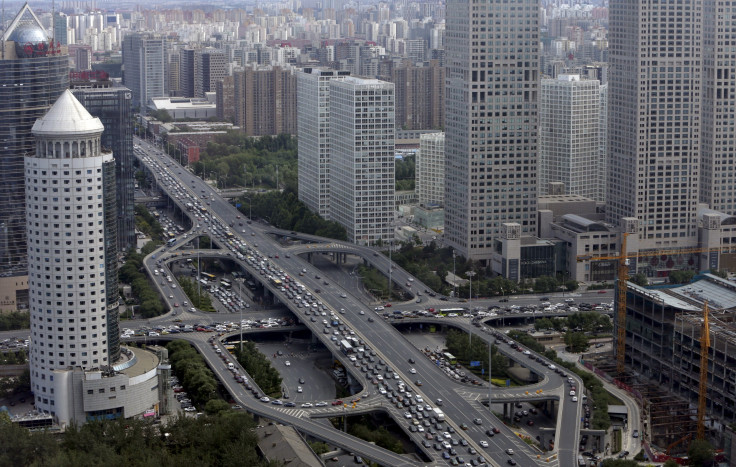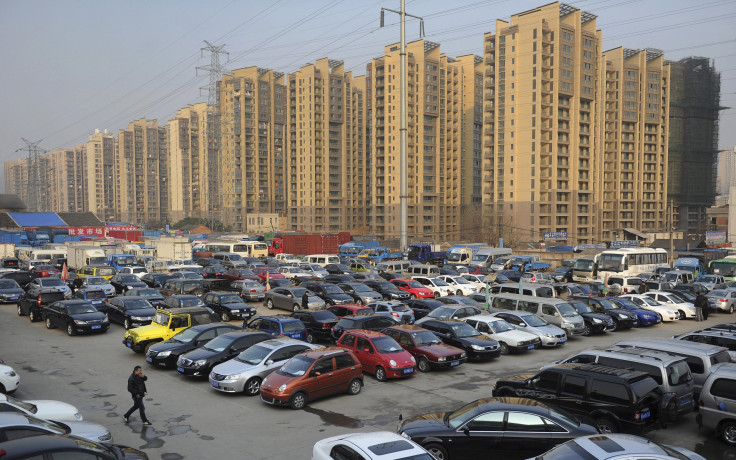China’s Q2 GDP Growth 'Stable' At 7% As Exports And Housing Sales Pick Up, But Growth In Investment And Consumption Slows

SHANGHAI -- China’s GDP grew at 7 percent for the second quarter, according to official figures released on Tuesday -- defying predictions that it might fall below that level for the first time in over a decade.
China's National Bureau of Statistics (NBS) hailed "signs of stabilization," as the growth rate equalled that of the first quarter of the year -- its lowest rate since 2009. However analysts pointed to slowing growth in real estate investment and consumption as a sign that challenges remain.
The data followed the announcement earlier in the week that June exports had grown faster than expected at 2.8 percent, while imports had fallen at a slower pace than predicted. And in further evidence of a slight rebound in manufacturing, the NBS announced a rise in industrial output in June of 6.8 percent, up from 6.1 percent a month earlier. Much of the boost came from the tertiary sector, which grew at 8.4 percent overall in the first half of the year, after a rise of 7.9 percent in the first quarter.

Chinese Premier Li Keqiang said last week that the country's economy was “regaining its strength,” while the NBS also announced recently that it was "over the worst." However, its statement on Wednesday acknowledged that the domestic and international economic situation remained “complex,” and officials have said previously that meeting China's target of “about 7 percent” growth for the year may be an "arduous task."
The latest statistics also give clear reminders of the challenges facing the world's second largest economy: the Chinese government has said that consumer spending is one of the keys to boosting the economy amid falling export orders -- and the NBS announced that consumption accounted for 60 percent of economic growth in the first half. However, the overall growth of 10.4 percent in retail sales in the first half of the year marked a decline from the first quarter figure of 10.6 percent -- and represents the lowest growth rate since 2003, according to ANZ Banking Corporation analysts Liu Li-gang and Zhou Hao. Sales of private cars have also been hit, growing just 0.5 percent year-on-year in the second quarter, down from 9 percent in the previous quarter.
And while the NBS said growth in the service sector was partly supported by “buoyant stock market trading,” which had boosted brokerages, the bull run on China’s markets from January to May turned into a rout in mid-June, with the market now around 25 percent lower than its peak, having lost more than $2 trillion in share value.
This has also led to fears of a further impact on consumer spending: the NBS highlighted “recovering property sales” as one of the positive factors in the economy, with revenue up 10 percent year-on-year in June, compared to growth of just over 3 percent in May -- and following more than a year of falling sales revenue. The amount of floor space sold in the first half of 2015 also rose, by almost 4 percent (with significantly faster growth in May and June.) However, analysts say this rise has been partly fuelled by the stock market boom: house prices have risen fastest in the southern city of Shenzhen, which saw the biggest expansion of its stock markets -- though these also fell farther over the past month, before rebounding over the past week after aggressive government intervention.
And investment in new real estate -- seen by many economists as having been a key motor of growth in China’s economy over recent years -- has continued to slow, despite a series of measures aimed at encouraging property purchases and sales, including cuts in bank lending rates, and easier access to housing loans. The rise in property investment was 4.6 percent -- the slowest level of growth since the first quarter of 2009, the NBS said. And in a further sign of the continuing pressure on China’s real estate developers, the amount of land bought by property companies in the first half of the year was down more than a third from the previous year.
And though the Chinese government has recently announced it will speed up an increase in infrastructure investment -- with more than $140 billion approved by the end of June -- slowing property investment also hit overall figures for fixed asset investment in the first half of the year. This grew by 11.4 percent, compared to 13.5 percent in the first quarter – and well below the government’s target of 15 percent.

ANZ analysts Liu and Zhou said in a note that real economic activities have "stabilised somewhat, but have yet to pick up strongly." They suggested the Chinese government would need to continue implementing a “proactive fiscal policy,” including further interest rate cuts, in the second half of the year, in order to hit its investment targets.
And with some analysts suggesting that the stock market fall could hurt attempts to boost small and innovative companies, ANZ also warned that despite recent cuts in bank interest rates, real borrowing rates for Chinese businesses remain “extremely high," and could “reduce their incentives to expand investment and production.”
And while a spokesman for the NBS said a stable stock market was crucial for the growth of the economy, concerns remain as to whether the goverment's raft of stabilization measures will prove sufficient. On Wednesday China's markets fell again, with the main Shanghai Composite Index down more than 3 percent, and the secondary Shenzhen index down by over 4 percent. Analysts said investors were seeking to lock in profits after the rises of the past week, amid continuing uncertainty.
© Copyright IBTimes 2024. All rights reserved.






















